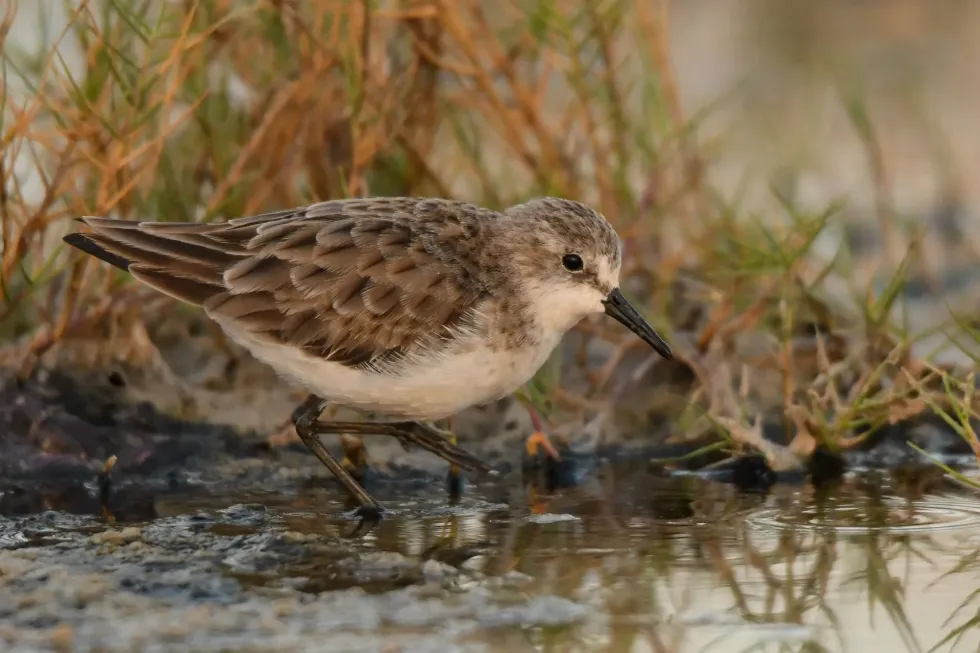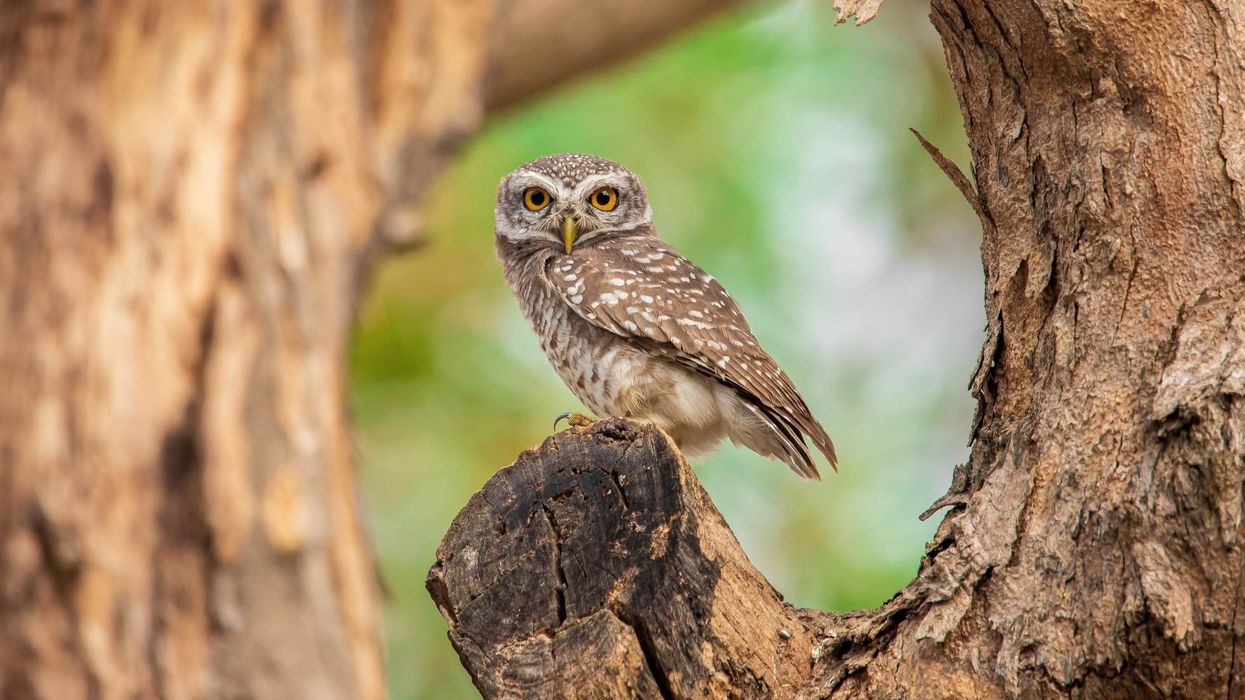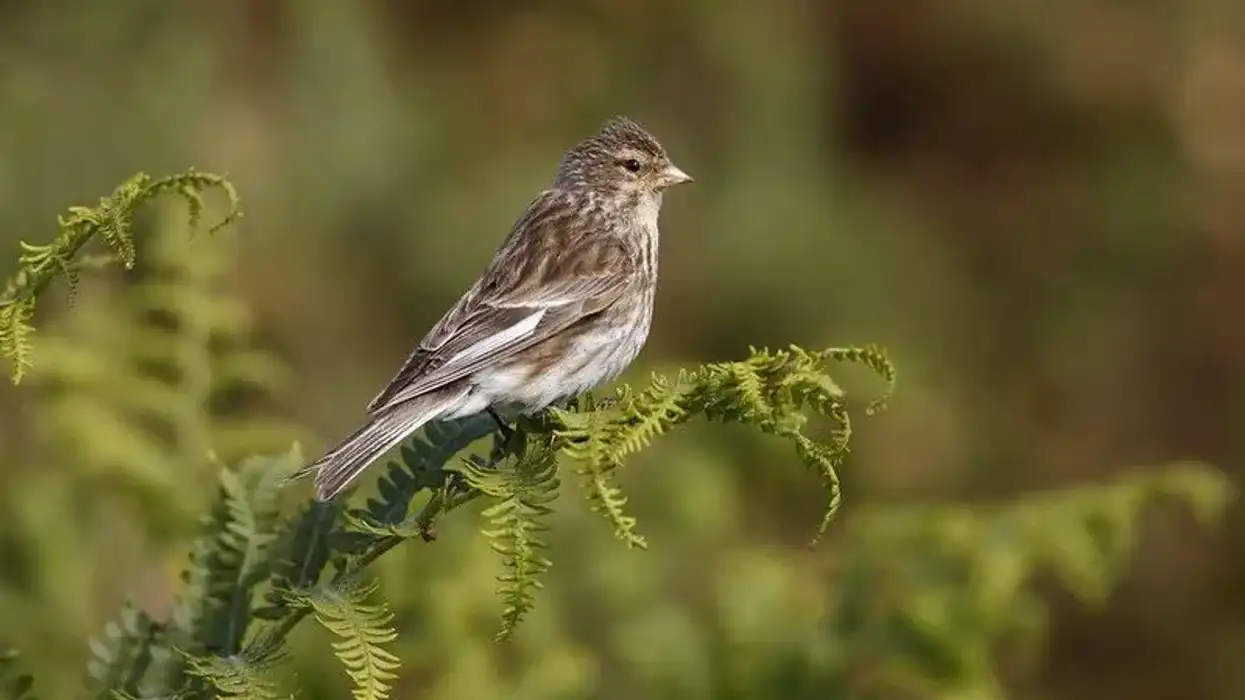As the name suggests, little stint (Calidris minuta) is a tiny bird, sometimes also referred to as a small wader. These birds have a large family in several regions of Europe and Asia.
Our little stint, Calidris minuta is an excellent long-distance migrate and these species are said to spend their winter in the regions of southern Africa and south of Asia.
You have the best chance of sighting these birds near wetland regions in the north during summer. These tiny Eurasian species have a very large range from Europe to Asia and further, and in Africa, although it's very rare to find these birds in North America.
These birds got their genus name from ancient Greek, where they were considered gray-colored birds residing in wetlands, or simply as a shorebird. Their scientific name originated from Latin, where minuta stands for small. Although sometimes it can be difficult to identify a tiny stint, their plumage pattern can be very helpful in such cases.
To learn more about such interesting birds, make sure to check out our other amazing articles on Australian pelicans and Glossy Ibis.
Little Stint Interesting Facts
What type of animal is a little stint?
Little stint, Calidris minuta is a type of bird and it belongs to the family of Scolopacidae.
What class of animal does a little stint belong to?
Little stints belong to the aves class, like any other bird.
How many little stints are there in the world?
As these birds are vagrant to North America and New Zealand, it's safe to assume that this Eurasian shorebird has a very small population in these regions. Nonetheless, across regions of the Pacific and Asia, these species have an estimated population of around 1.4 billion to 1.5 billion.
Where does a little stint live?
The juvenile little stint is a migratory bird, thus they have different habitats for both summer and winter. In the Asian region, these birds are also famously addressed as Indian little stint where they are found near regions of Kushmurun Lake and Zhumay-mayshukyr lake.
Little stint juvenile is also distributed in southern Europe regions along with Mediterranean region, Pacific coast, Middle East, and Africa.
What is a little stint's habitat?
A natural ecosystem for these birds that supports their breeding and other habits is often not forest areas. Regions such as Arctic tundra, mudflats, wetland along salt-marshes are often more favored by these tiny birds.
Families wishing to create an artificial ecosystem for these species must take in note that a usual little stint of USA native birds would prefer freshwater ponds with some current.
Who do little stints live with?
Little stint range covers various countries and numeral saline resources. It can be difficult to understand the neighboring birds of this species, nonetheless, these birds also tend to share their habitat with similar species and subspecies in nature. Adult birds of this species are assumed to live with European robins and during the winter season, they live with Sunbirds.
How long does a little stint live?
An average adult Tanzania little stint bird lives for around six to seven years.
How do they reproduce?
Breeding season for these birds begins during the months of June to July. In most cases, little stint in July can be seen participating in various kinds of courtship behavior, which includes monogamy, polygamy.
It is observed that western sandpiper or little stint male and female choose to incubate their clutches separately. Around three to four eggs can be expected per season.
What is their conservation status?
It can be difficult to search for a little stint beach bird in the north. Nonetheless, despite being a vagrant in the north, they enjoy a very good population and are marked under Least Concern.
Little Stint Fun Facts
What do little stints look like?
While considering between little stint vs red-necked stint, there are very differences to note. However, a careful guide into understanding the little stint identification may help you come across these birds in the breeding season or identify them.
These birds have white underparts and black spots along with the wings and back, along with an orange-brown color spread over their head. One can also identify them through their black legs and dark rumps.
The plumage patterns of these birds are the main key while drawing a comparison between little stint vs least sandpiper winter.
Non-breeding little stint birds appear pale gray, they are bill-shaped. Although, a little stint non-breeding bird may prove to be very difficult to separate from the breeding birds.

How cute are they?
The beautiful red to the orange head and black spots make them seem very different compared to other pacific birds. However, their white underparts add a very good touch to their entire appearance; hence, these birds, with lovely plumage, can be very cute companions.
How do they communicate?
Communication during breeding can be seen in the form of calls and similar noises. These species also use various communication techniques such as aggressively flipping wings while guarding the eggs.
How big is a little stint?
A general little stint California bird is very tiny in size they weigh roughly around 0.04-0.09 lb (0.020-0.045 kg). Although these birds are almost equal in size to the northern short-tailed shrew and five times smaller than a grouse.
How fast can a little stint fly?
These gray-white birds can catch pretty impressive flights, as their wingspan can take a pretty good length when opened. The following feature complements their flight even during the search for habitat while in the migration season (winter season).
How much does a little stint weigh?
It is very difficult to consider these birds separate from other similar species as they almost weigh equal to any two sub-species in their natural habitat. Nonetheless, these dusky-red-headed birds weigh around 0.04-0.09 lb (0.020-0.045 kg).
What are the male and female names of the species?
In the family of the little stint (Calidris minuta), both sexes aren't distinguished and carry similar names. You may call them either through their scientific name or local name. Both sexes are addressed in a similar fashion.
What would you call a baby little stint?
The young are often pale in color and have faded dark spots on their back. One can take into use the term hatchlings or nestlings to refer to them.
What do they eat?
This species mostly take their food from deep down the gravel. A general diet map for this bird includes larva, adult flies, mosquitoes or simply plant matter.
Are they dangerous?
No, these birds are not dangerous to humans in any way.
Would they make a good pet?
Yes, they can be considered to be good pets, however, owners and families must know that this species is loud and can sometimes cause chaos with their calls.
Did you know...
These birds from the mudflats have very strong eyesight, which helps them to map out their food smoothly.
Birds such as snowy owls and skuas are considered the enemies of these birds.
In favorable conditions, these tiny birds with their black legs can survive up to 10-14 years.
These birds live in a small or large group of birds, consisting of similar species. It also helps them during migration.
Do little stints migrate?
These birds map down various regions which stand suitable for them. This species breeds in Europe and also Asia, during winter they tend to migrate to Africa and the Indian subcontinent. Summers for these birds are spent in the arctic, which is around May to June.
How did the stint get its name?
Their name arrives from ancient Greek, where kalidris was used to refer to gray. The scientific name of this bird comes from Latin, where minuta stands for small.
Here at Kidadl, we have carefully created lots of interesting family-friendly animal facts for everyone to discover! For more relatable content, check out these Green Heron Facts and Reddish Egret Facts pages.
You can even occupy yourself at home by coloring in one of our free printable little stint coloring pages.










